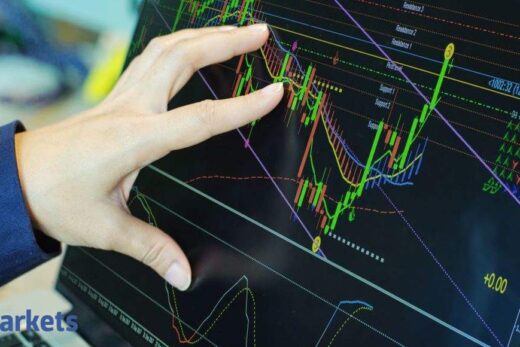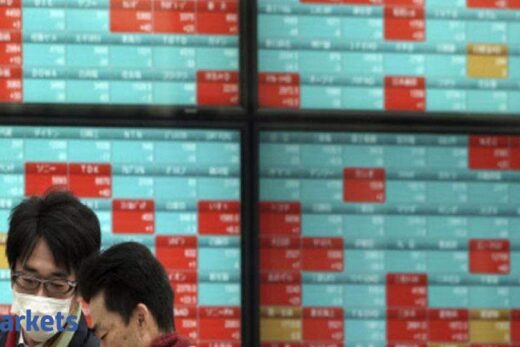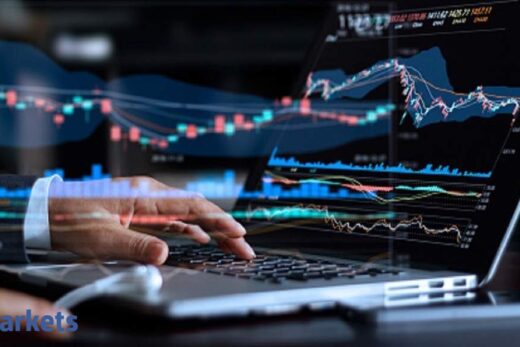Japan’s benchmark Nikkei 225 edged down 0.9% in morning trading to 28,559.89, as investors mostly took a wait-and-see attitude ahead of the nationwide parliamentary elections Sunday.
The ruling Liberal Democratic Party, which has ruled almost continuously for decades, is expected to continue to stay in power. But the opposition is also expected to gain ground because of public discontent over the government’s handling of the coronavirus pandemic and worries about the economy.
South Korea’s Kospi lost 0.7% to 2,988.09. Australia’s S&P/ASX 200 declined 0.7% to 7,381.50. Hong Kong’s Hang Seng dipped 0.8% to 25,343.14, while the Shanghai Composite shed 0.1% to 3,514.03.
Heavy selling of some technology shares in after-hours trading cast a shadow. Apple dropped 5.4% in after-hours trading after the company’s fiscal fourth-quarter revenue fell short of Wall Street’s estimates. Amazon.com fell 4% in after-hours trading after its third-quarter earnings missed analysts’ forecasts.
“While sentiments may want to ride on the bullish moves in Wall Street overnight, market participants will also be digesting the weakness in big tech after-market, which may dampen some optimism,” said Yeap Jun Rong, market strategist at IG in Singapore.
The S&P 500 and Nasdaq reached new highs Thursday, as the market more than made up for modest losses a day earlier.
The S&P 500 rose 1% to 4,596.42, posting its third all-time high this week. More than 80% of the stocks in the benchmark index closed higher. Technology stocks, banks and a mix of companies that rely on consumer spending accounted for much of the gains.
The Nasdaq rose 1.4%, nudging the tech-heavy index to 15448.12, above its previous record high set Sept. 7. The Dow Jones Industrial Average rose 0.7% to 35,730.48, leaving it just shy of the all-time high it set on Tuesday.
The Russell 2000 index of small companies climbed 2%, to 2,297.98.
Smaller stocks outpaced the broader market in a sign that investors are more confident about economic growth.
Investors welcomed another encouraging batch of corporate earnings reports by companies such as Ford and Caterpillar. With just over a third of S&P 500 companies having reported results for the July-September quarter, some 66% have posted earnings and revenue that topped Wall Street’s estimates, according to S&P Global Market Intelligence.
Low interest rates and growing company earnings have kept investors in a buying mood, said Sameer Samana, senior global market strategist at Wells Fargo Investment Institute.
“If you look at the economic data and you look at earnings, even though we’re probably past what could be considered peak growth rates, they’re still growing at very healthy levels,” he said.
Bond yields edged higher. The yield on the 10-year Treasury rose to 1.57% from 1.53%.
Outside of earnings, investors got a mixed bag of economic updates Thursday.
Hampered by rising COVID-19 cases and persistent supply shortages, the U.S. economy slowed sharply to a 2% annual growth rate in the July-September period, according to the Commerce Department. That marks the weakest quarterly expansion since the recovery from the pandemic recession began last year.
The Labor Department released a more upbeat report on the nation’s unemployment situation. The number of Americans applying for unemployment benefits fell to a pandemic low last week, another sign that the job market and economy continue to recover from last year’s coronavirus recession.
“There’s a cocktail of economic news coming out that is strong and positive, but in some cases lackluster,” Ball said. “That combination, in total, is probably good for the staying power of the economy.”
Both the pace of economic growth and the state of the jobs market are on investors’ minds as they look ahead to the Federal Reserve’s meeting next week to see how it moves forward with plans to trim bond purchases and its position on interest rates.
Rising energy prices have also raised concerns about the cost for consumers as they pay more to fill gas tanks and heat homes. U.S. crude oil prices inched up 0.2% Thursday and have jumped more than 70% so far this year.
Benchmark U.S. crude inched up 1 cent to $82.82 a barrel. Brent crude, the international standard, rose 14 cents to $84.46 a barrel.
In currency trading, the U.S. dollar inched down to 113.54 Japanese yen from 113.56 yen. The euro cost $1.1678, down from $1.1679.



